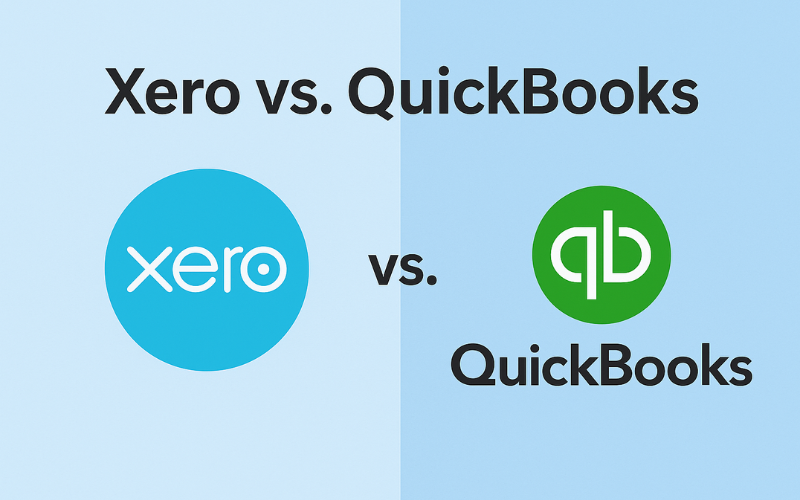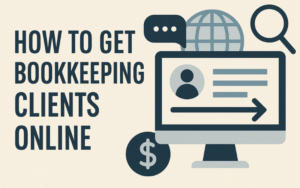As automation and compliance requirements evolve in 2025, choosing the right accounting software is more critical than ever. Small businesses, startups, and even solo entrepreneurs need intuitive, reliable, and scalable platforms to manage financial records, file taxes, and gain insights into business health. Xero and QuickBooks remain two of the most trusted cloud accounting tools globally, but they serve different user needs. This guide breaks down their differences to help you make an informed choice.
Overview of Xero and QuickBooks
Xero is a New Zealand-based cloud accounting platform widely recognized for its intuitive interface and excellent multi-currency support. Popular among startups and small businesses, Xero emphasizes simplicity, automation, and seamless collaboration with accountants.
QuickBooks, developed by Intuit, is an industry giant in North America. Known for robust features and scalability, QuickBooks offers both QuickBooks Online (QBO) for cloud users and QuickBooks Desktop for traditional accounting.
Both platforms provide end-to-end accounting tools, but they differ in pricing, usability, integrations, and business suitability.
Feature Comparison Table
| Feature | Xero | QuickBooks Online |
| Invoicing | Custom templates, recurring invoices | Smart invoicing, payment reminders |
| Bank Reconciliation | AI-powered matching, bulk reconciliation | Real-time bank feeds, rule-based matching |
| Payroll | Integrated in select regions | Integrated via QuickBooks Payroll |
| Inventory Tracking | Basic inventory, real-time updates | Advanced inventory in Plus & Advanced |
| Multi-currency Support | Included in Standard & Premium plans | Only in Advanced plan |
| Mobile App | Clean UI, good for invoicing | Feature-rich, intuitive dashboard |
| Reporting & Dashboards | Smart reports, custom KPIs | Advanced financial & cash flow reports |
| Integrations & Apps | 1,000+ apps including Stripe, Gusto | 750+ apps including Shopify, PayPal |
| User Access & Roles | Unlimited users (with role control) | Limited users by plan (1–25) |
| Support | 24/7 email, live chat | Phone, chat, callback support |
Pricing Breakdown
Xero Pricing (2025):
- Starter: $15/month – Limited invoices and bills
- Standard: $42/month – Unlimited invoices, bills, bank reconciliation
- Premium: $78/month – Adds multi-currency and advanced features
No additional fee per user
QuickBooks Online Pricing (2025):
- Simple Start: $30/month – 1 user, basic accounting
- Essentials: $60/month – 3 users, bill management
- Plus: $90/month – 5 users, project tracking, inventory
- Advanced: $200/month – 25 users, premium support, automation
Extra for payroll, time tracking, and add-ons
Key Takeaway: Xero offers more value per user, especially for growing teams. QuickBooks can get expensive with scaling.
Ease of Use & Interface Design
Xero boasts a clean, modern interface ideal for beginners and non-accountants. Navigation is intuitive, and most functions are only a few clicks away.

QuickBooks Online, while slightly more complex, is powerful and feature-rich. It may involve a steeper learning curve but provides better depth for experienced users and accountants.
Verdict: Xero wins on simplicity, QuickBooks wins on depth.
Integrations & Third-party Apps
Xero supports over 1,000 integrations through its App Marketplace, including Trello, HubSpot, and PayPal. It’s especially strong in automation and cloud-native tools.
QuickBooks has around 750 integrations, including industry leaders like Shopify and Salesforce. Its integration with other Intuit products (e.g., TurboTax, Mint) is seamless.
Verdict: Xero offers wider integrations; QuickBooks offers stronger ecosystem integrations.
Mobile App Performance
Both platforms have excellent mobile apps available on iOS and Android.

- Xero App is lighter and focused on basic tasks like invoicing, bank rec, and receipt capture.
- QuickBooks App offers mileage tracking, time tracking, sales receipts, and reports.
Verdict: QuickBooks offers a more powerful mobile experience, but Xero is more beginner-friendly.
Customer Support & Community
- Xero: 24/7 email support, in-app messaging, no direct phone support.
- QuickBooks: Live chat, callback support, large help center, QuickBooks ProAdvisors.
Community: Both have extensive forums, tutorials, and certified advisor networks.
Verdict: QuickBooks offers better direct support; Xero focuses on self-help and email/chat.
Best For: Who Should Use Xero vs. QuickBooks?
| Use Case | Best Option |
| Startups & freelancers | Xero |
| Growing teams needing collaboration | Xero |
| Businesses needing inventory tools | QuickBooks Plus or Advanced |
| Companies already using Intuit tools | QuickBooks |
| International or multi-currency | Xero Premium |
| Service-based solopreneurs | QuickBooks Simple Start |
Final Verdict: Which One Should You Choose in 2025?
Both Xero and QuickBooks are top-tier accounting platforms, but they serve different user personas:
- Choose Xero if you want simplicity, cost-efficiency, and global flexibility.
- Choose QuickBooks if you need advanced features, deeper reporting, and tight integration with Intuit’s ecosystem.
In 2025, the choice often comes down to team size, business complexity, and feature priorities. Evaluate your needs before committing—many users find success in trialing both before deciding.
FAQs
Is Xero better than QuickBooks?
It depends. Xero is better for startups and international users. QuickBooks is stronger for detailed reporting and large U.S.-based businesses.
Can I switch from QuickBooks to Xero?
Yes, both platforms offer migration tools. Third-party services can also help you transfer data seamlessly.
Does Xero support payroll in the U.S.?
Yes, but only through integrations like Gusto. Native payroll is limited in the U.S.Is QuickBooks more expensive than Xero?
Generally, yes—especially for multi-user access and when add-ons like payroll and inventory are required.




